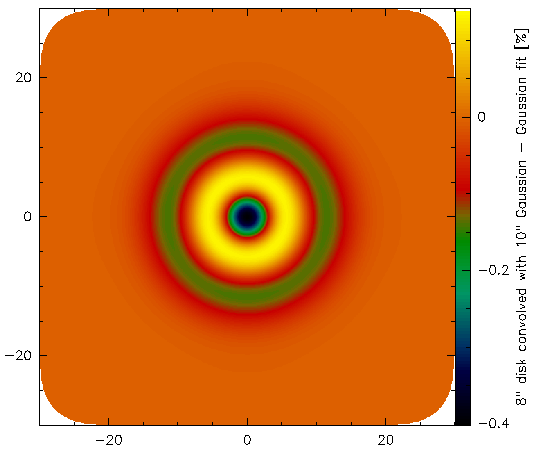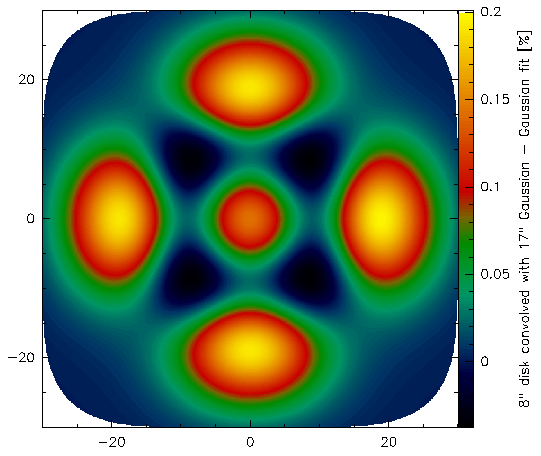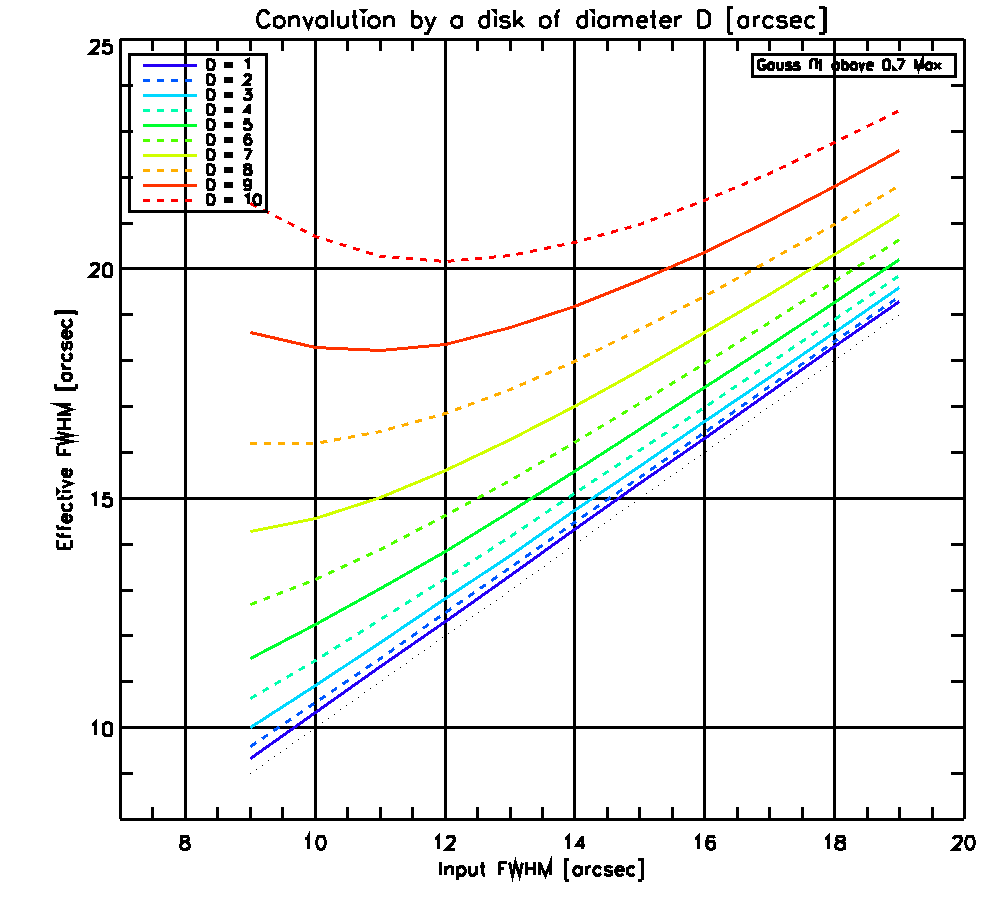|
Size: 1360
Comment:
|
Size: 1537
Comment:
|
| Deletions are marked like this. | Additions are marked like this. |
| Line 6: | Line 6: |
| The figure fwhm_planet gives FWHM ~16 and 20arcsec for an 8arcsec disk convolved with 10 and 17arcsec Gaussians correspondingly. I can hardly believe it ! To check this I calculated just the 2 cases, i.e. convolved an 8arcsec disc with 10 and 17arcsec Gaussians. The resulting sources are very well represented by Gaussians with FWHM of 11.1 and 17.7arcsec (no restrictions for the fitting). The difference of the resulting sources and the Gaussian fits are presented below. The discrepancy is -0.4 to +0.14% for the convolution with a 10arcsec and -0.04 to +0.2% for the convolution with a 17arcsec Gaussian. Or do I have a problem in reading the figure fwhm_planet ? | The figure fwhm_planet gives FWHM ~16 and 20arcsec for an 8arcsec disk convolved with 10 and 17arcsec Gaussians correspondingly. I can hardly believe it ! The upper limits for the resulting FWHM can be calculated using a Gaussian with FWHM=8arcsec instead a disk: sqrt(8^2^+10^2^)=12.8 and sqrt(8^2^+17^2^)=18.8arcsec. To get the correct numbers I calculated just the 2 cases, i.e. convolved an 8arcsec disc with 10 and 17arcsec Gaussians. The resulting sources are very well represented by Gaussians with FWHM of 11.1 and 17.7arcsec (no restrictions for the fitting). The difference of the resulting sources and the Gaussian fits are presented below. The discrepancy is -0.4 to +0.14% for the convolution with a 10arcsec and -0.04 to +0.2% for the convolution with a 17arcsec Gaussian. Or do I have a problem in reading the figure fwhm_planet ? |
Offline Processing Results
RZ, May 30 2012
The figure fwhm_planet gives FWHM ~16 and 20arcsec for an 8arcsec disk convolved with 10 and 17arcsec Gaussians correspondingly. I can hardly believe it ! The upper limits for the resulting FWHM can be calculated using a Gaussian with FWHM=8arcsec instead a disk: sqrt(82+102)=12.8 and sqrt(82+172)=18.8arcsec. To get the correct numbers I calculated just the 2 cases, i.e. convolved an 8arcsec disc with 10 and 17arcsec Gaussians. The resulting sources are very well represented by Gaussians with FWHM of 11.1 and 17.7arcsec (no restrictions for the fitting). The difference of the resulting sources and the Gaussian fits are presented below. The discrepancy is -0.4 to +0.14% for the convolution with a 10arcsec and -0.04 to +0.2% for the convolution with a 17arcsec Gaussian. Or do I have a problem in reading the figure fwhm_planet ?


In preparation for beam studies on Mars, we wanted to estimate the impact of Mars diameter (8 arcsec these days) on the determination of NIKA's FWHM.
We convolve a true gaussian by a disk and obtain an effective beam that is no longer gaussian. A gaussian can however be fit (with moderate accuracy) around the peak. Restricting to the region where the effective beam is larger than 0.7 times the maximum, we obtain the following distortion pattern

